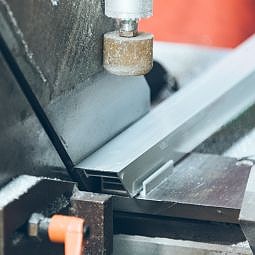
Aluminum is an exceptionally durable metal, making it useful for various applications. Its versatility leads to the development of two aluminum manufacturing processes: extrusion and casting. While they both create aluminum products, their techniques differ. What's the difference between extruded and cast aluminum?
Extruded aluminum, or "aluminum extrusion," involves creating cross-sectional shapes by heating and pushing an aluminum billet through a die. The die takes the shape of the aluminum profile's cross-section, and the billet emerges in the same shape. This process enables the manufacturers an incredible variety of aluminum profiles with varying lengths and sizes.
Aluminum extrusion typically produces profiles that require a consistent cross-sectional shape, such as beams, channels, and tubes. However, the process produces materials with excellent mechanical properties, and extruded aluminum is less dense than its cast counterpart.
Cast aluminum requires heating aluminum alloys to their melting point and pouring the molten metal into a die. The metal hardens and takes the shape of the mold, creating the final product. The casting process produces intricate designs and shapes. Cast aluminum also boasts impressive mechanical properties, including high strength and density.
The casting method can create aluminum parts with complex geometries and thin, intricate walls. Cast aluminum is common in the food, automotive, and aerospace industries.
The primary difference between extrusion and casting is the shaping process. Fabricators push extruded aluminum through a die and pour cast aluminum into a mold. Each method offers a range of shapes and sizes and can create unique aluminum profiles to meet your demands.
Extruded aluminum is limited in shapes and sizes, but the process is simpler, cheaper, and quicker than casting. While casting produces more intricate shapes, it's more expensive and time-consuming than extrusion.
Although both processes produce aluminum, the difference between extruded and cast aluminum is significant. The former is more straightforward and produces more versatile materials. Casting lets manufacturers create complex designs with thin walls.
Understanding the strengths and weaknesses of these methods is critical when selecting the best process for your application. Hopefully, this article has shed some light on the differences between extruded and cast aluminum, and you can make an informed decision for your product design process. If you need extruded aluminum profiles, contact A-Line Automation for top-tier products and services. We specialize in designing, manufacturing, assembling, and delivering custom aluminum profiles that meet your specifications. Contact us today to discuss your project with our experienced team!